FREE Film School Week Seven: 3 Point Lighting
We’ve reached week 7 of our FREE Film School series. If you’ve been trying out the exercises by now you will have:
- watched one film 7 times and studied it
- read 1 professional screenplay of a film you haven’t seen
- shot & edited a film using black and white stills
- shot & edited a film using shots of 3-4 seconds
- written 1000 words on a period of your life
- written a 10 page first draft screenplay
Last week we had some responses disagreeing with my point that the screenplay is not the most important thing in a film. I know it’s a common belief that the story is king, but that’s not the same as screenplay as far as film is concerned.
How important is a screenplay?
Short answer: very.
But seriously, one of the most important things for any filmmaker to understand is that the script must serve the film. The screenwriter is truly one member of the team whose job is to provide a solid foundation to build on.
Of course, some films are more reliant on the screenplay being finely crafted than others. Is the screenplay for the film Transformers the most important thing? Or is it the incredible action packed CGI work?
OK, now I’m angry
Let’s take a film like 12 Angry Men (1957). The film is directed by Sidney Lumet and adapted from a teleplay by Reginald Rose.
If you know a bit of film history, there’s a good chance you have heard of Sidney Lumet. Somewhat less chance you will have heard of the writer Reginald Rose. In fact, his wikipedia entry says he is “best known for writing the courtroom drama Twelve Angry Men.”
Anyway, the film is essentially set in one room with a cast of 12. If any film would be reliant on the script, then this is it. But how much of the success of that film is down to the vision of Lumet? The cinematography of Boris Kaufman? How much does star actor Henry Fonda add?
Criterion say about the film that “…without Fonda starring and producing, it might never have seen life beyond the small screen”.
You want a war about it?
Another example is the film Star Wars. Famously, many of the actors including Alec Guinness hated the screenplay and only agreed to do the film for the money.
“Can’t say I’m enjoying the film – new rubbish dialogue reaches me every other day on wages of pink paper – and none of it makes my character clear or even bearable.” Alec Guinness on filming Star Wars
See the thing is Star Wars revolutionised special effects work in movies. Nobody could have known what the film would look like because it had never been done before. Yes, there was Kubrick’s 2001 but had very slow camera movements, down to the limitations of the time.
What was the most important factor in the success of Star Wars? Was it the screenplay? Of course not (although it also played a major part) it was the groundbreaking special effects which made the difference.
This argument is giving me whiplash
More recently, whilst trying to fund the hit film Whiplash, the producers found the screenplay plus director’s reel wasn’t enough. So they shot a short film which was a hit at Sundance in 2013. After that, investors came forward for the feature film.
You can watch the full short film on Vimeo here.
So the story in itself wasn’t enough. Investors needed to see what it would like. And this isn’t to put down the craft of screenwriters in anyway. Why would I? I am one.
Rather it’s to explain that being a good screenwriter requires you to understand that your script must serve the film. Like every other department. Like sound, like camera, like the cast, the costumes and so on.
In a book words are most important. In a film it’s images.
When you think of Film Noir what do you think of?
Is it the writing? Or is it the lighting?
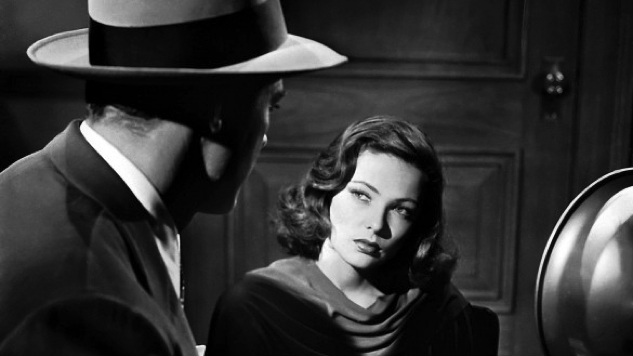
“Film noir” was a term first applied to Hollywood films by French critic Nino Frank in 1946. They were black and white and usually shot on a minimal budget. The most famous ones come from that era – 1940s to 1950s.
However, it wasn’t until the 1970s that the term caught on with American critics and filmmakers. So the genre of film noir was created somewhat retrospectively.
Film noirs are usually crime thrillers depicting morally ambiguous characters in desperate situations. But one of the things that really distinguishes film noir from other types of film of the era is the distinctive use of lighting.
Usually when lighting a shot we’re using more subtle techniques which we hope are not too obvious to the audience. But the thing about film noir is that the lighting is often more exaggerated than in other films. And for that reason, it’s easier for us aspiring filmmakers to see what’s going on.
What we remember as film noir lighting is often harsh and contains high contrast. Of course, not every shot is lit that way, but that’s what sticks in our minds. And in the years since the golden age of noir, that look has become something of trope for gritty crime thrillers.
Three-Point Lighting
Three-point lighting is a common method used in film, TV, theatre and other media, including video games and other computer generated imagery.
It’s usually set up using 3 lights. You probably guessed that already, right?
Key light
The key light is your main light. This is the light which provides most illumination for your subject. As the name suggests, the key light is the core of the light of the 3-point lighting set up. While the other 2 lights are more for subtle adjustments.
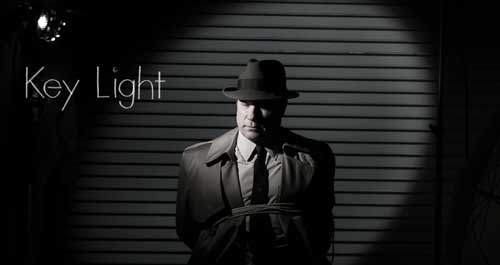
Indoors, the key light is a lamp of some kind. While outdoors the key light is usually the sun. So whereas indoors you can adjust the key light for the angle you want, outdoors you have to work with the position of the sun.
Fill light
The fill light adds light to the shadows of the subject. So, usually this means placing a light (usually weaker) at an angle to the key light. Put simply, the key light shines one one side, while the fill light fills in from the other.
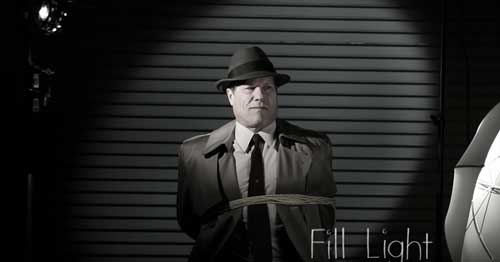
See how the fill light works in the image above? It doesn’t remove the shadow completely, but reduces the depth of the shadow so it’s not so extreme.
Backlight
The final point of light comes from the backlight. No prizes for guessing where the light is positioned. That’s right – behind the subject.
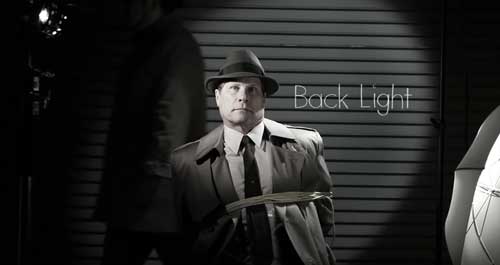
The purpose of the backlight is to add a highlight around parts of the subject to separate them from the background.
All 3 lights can be adjusted to create different looks depending on what you want to achieve.
What do you think of the lighting in the main image of this post (taken from Ridley Scott’s classic sci-fi noir, Blade Runner)? To me it looks like the backlight is the strongest light, creating a dramatic highlight down the side of the Sean Young’s face. Meanwhile, the key light is quite soft and the fill light even softer.
This really creates that Chiaroscuro look I wrote about recently reminiscent of Rembrandt self-portrait.
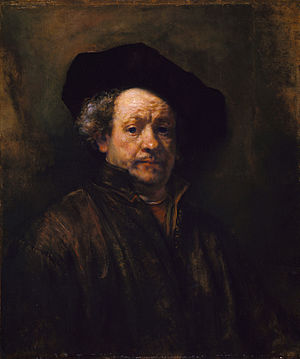
FREE Film School: Week Seven Task
Take whatever camera you have available to you and create a 3 point lighting setup. If you have a willing subject, then great. If not, you can use something to stand in for the a human – a doll, an action figure or a soft toy, it’s up to you.
Set the camera on a tripod and switch off the colour if you can. If you don’t have any official lighting equipment don’t worry, you can use any lights you have around the house. You simply need 3 mobile light sources.
On a film set, lighting technicians have various equipment at their disposal to get the right light. Filters for colour and to dampen or soften the light. Flaps called “barn doors” are used on film lights to dim or shape the light beam.
But if you don’t have access to these kind of lights, you can still get creative with what you have to hand. Tracing paper placed before a light to dampen and soften it. Pieces of card or plastic can be used for barn doors.
You can also use a reflective surface to create a fill light. When I worked with a professional camera crew filming Kosmos, the DoP would sometimes see who was wearing a white shirt. He’d then position that poor crew member as a human light reflector, to fill in the shadows.
So, a simple piece of white card can be used as a reflector. You can also buy a simple photography reflector which are not too expensive.
So, set up your 3 point lighting and takes some still or shoot some video. Play around, get creative. Try moving the lights and generally experimenting to see what you can achieve.
Eager to learn more?
Join our weekly newsletter featuring inspiring stories, no-budget filmmaking tips and comprehensive equipment reviews to help you turn your film projects into reality!
Simon Horrocks
Simon Horrocks is a screenwriter & filmmaker. His debut feature THIRD CONTACT was shot on a consumer camcorder and premiered at the BFI IMAX in 2013. His shot-on-smartphones sci-fi series SILENT EYE featured on Amazon Prime. He now runs a popular Patreon page which offers online courses for beginners, customised tips and more: www.patreon.com/SilentEye

